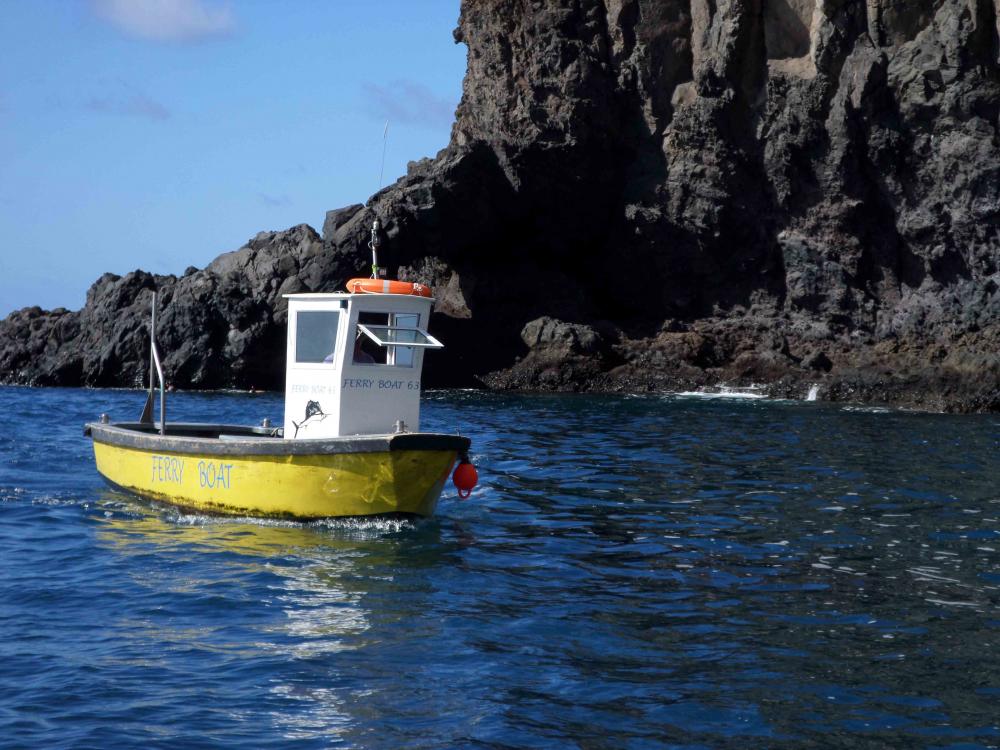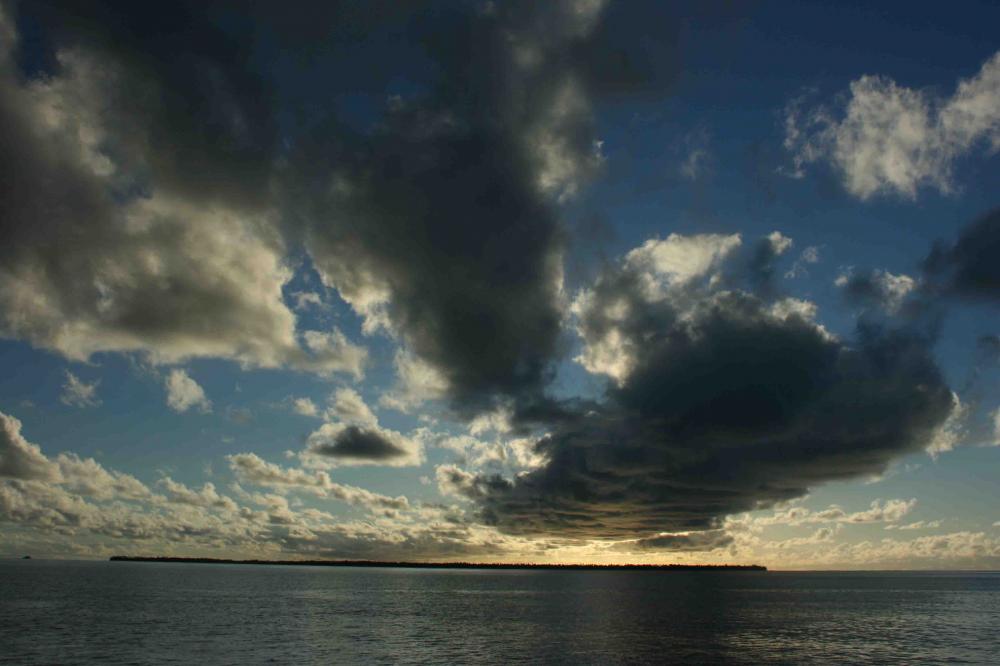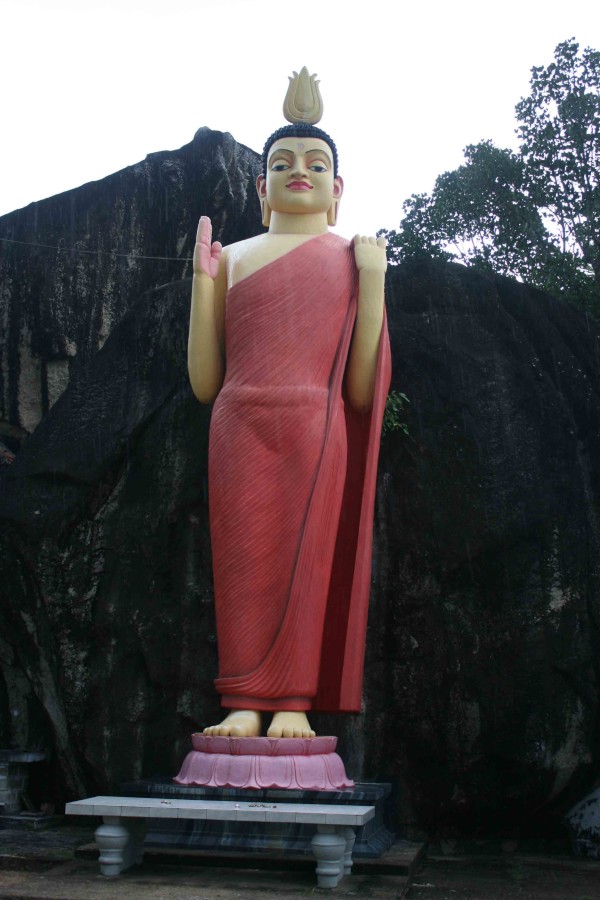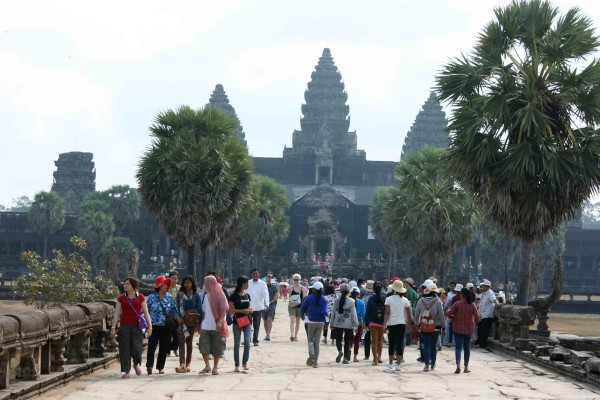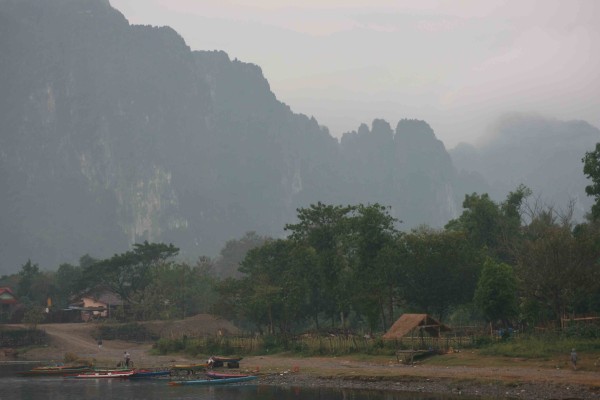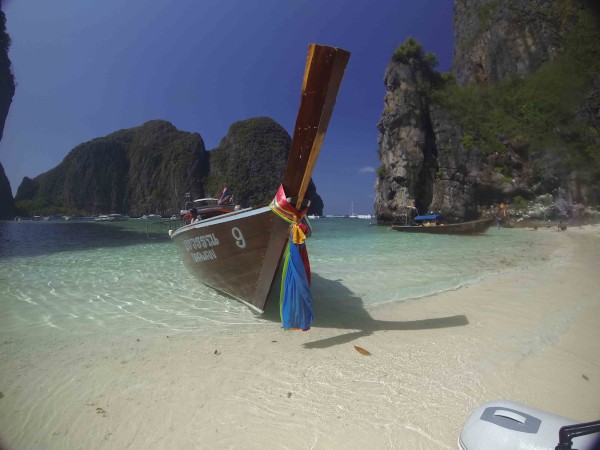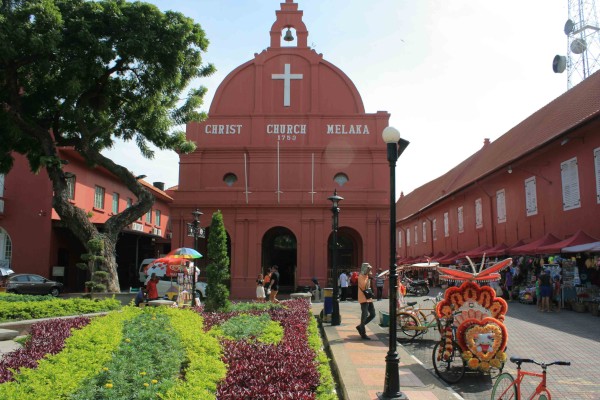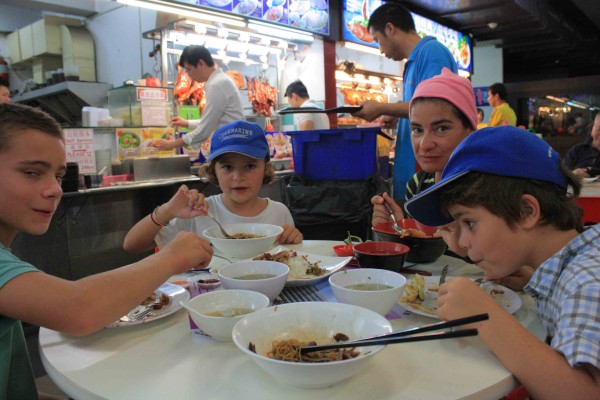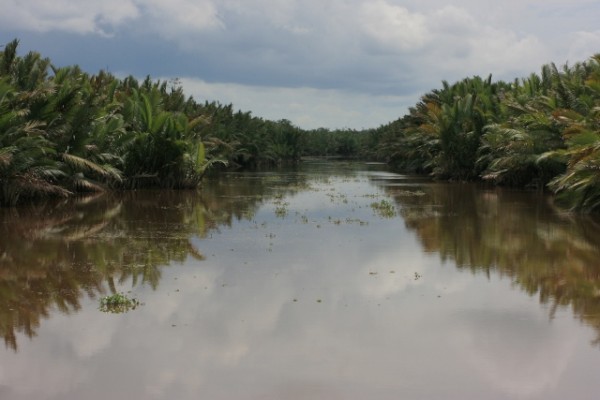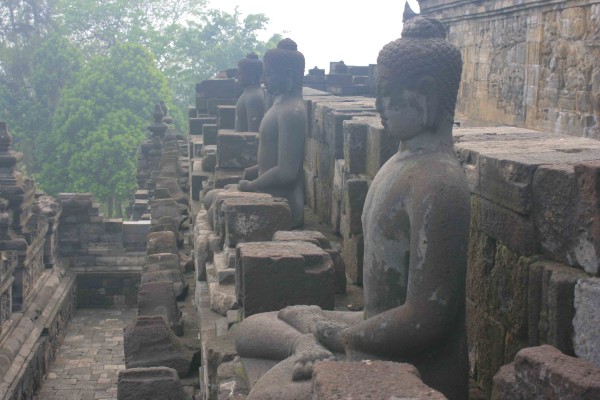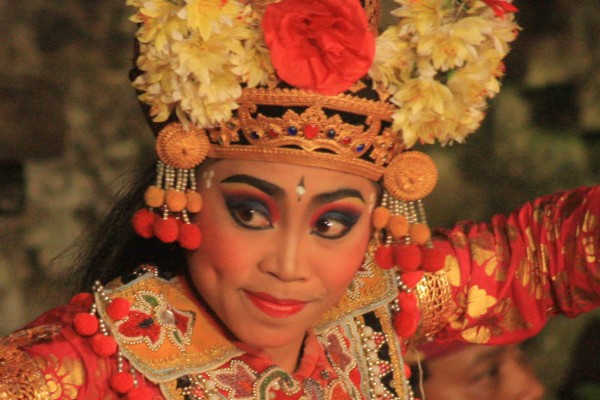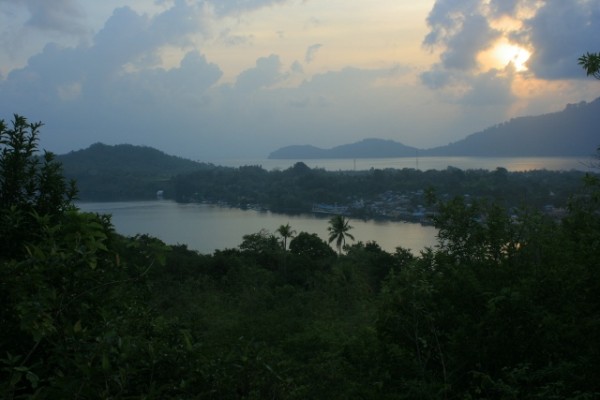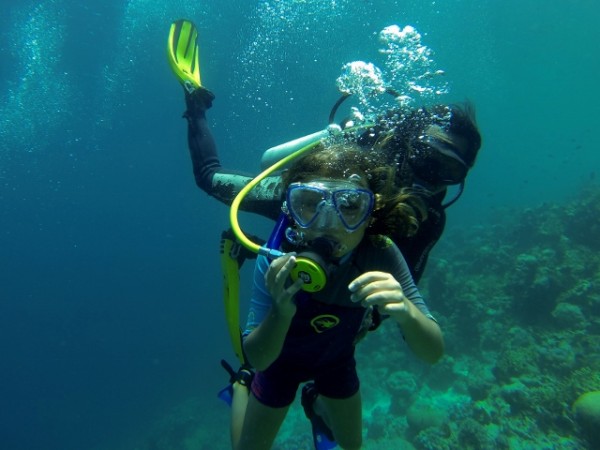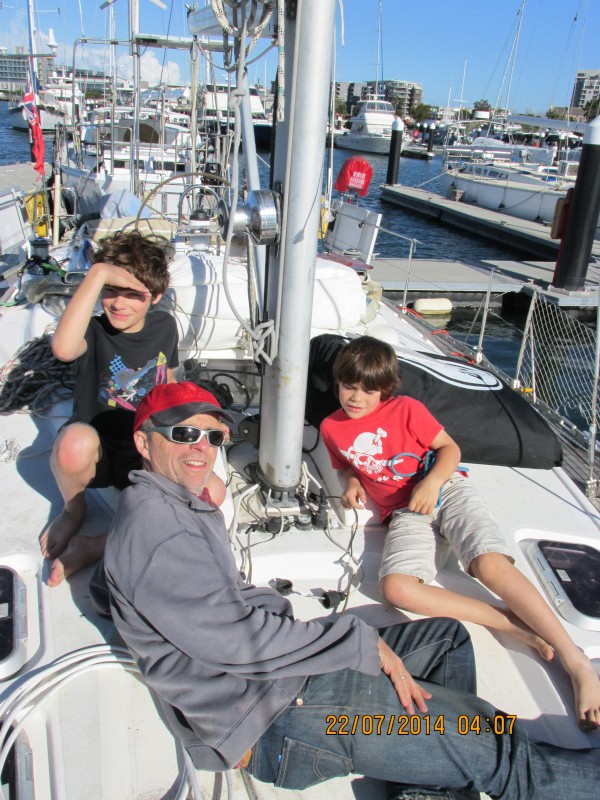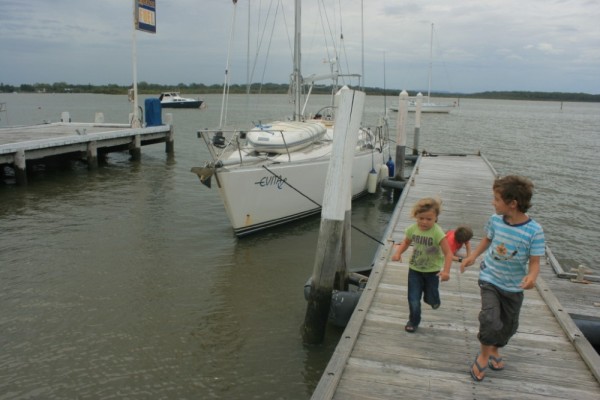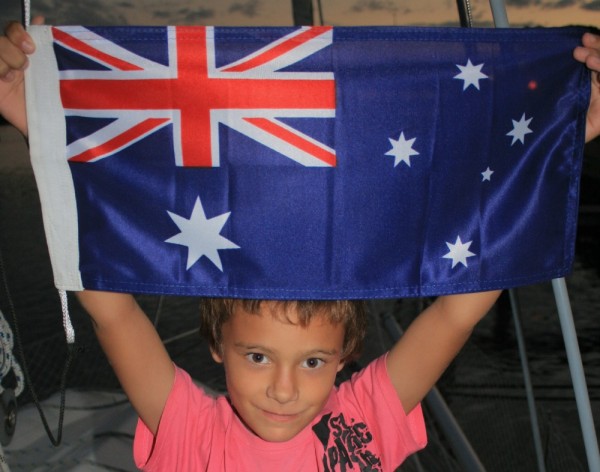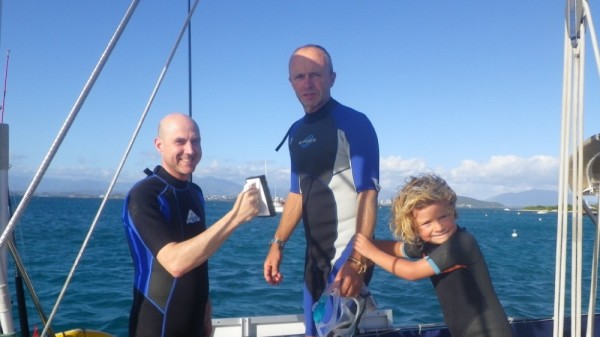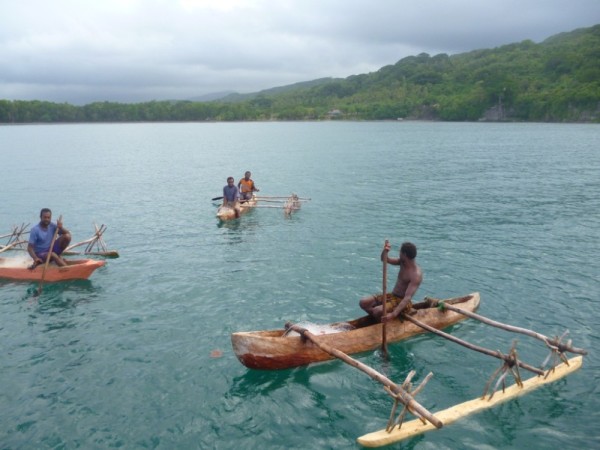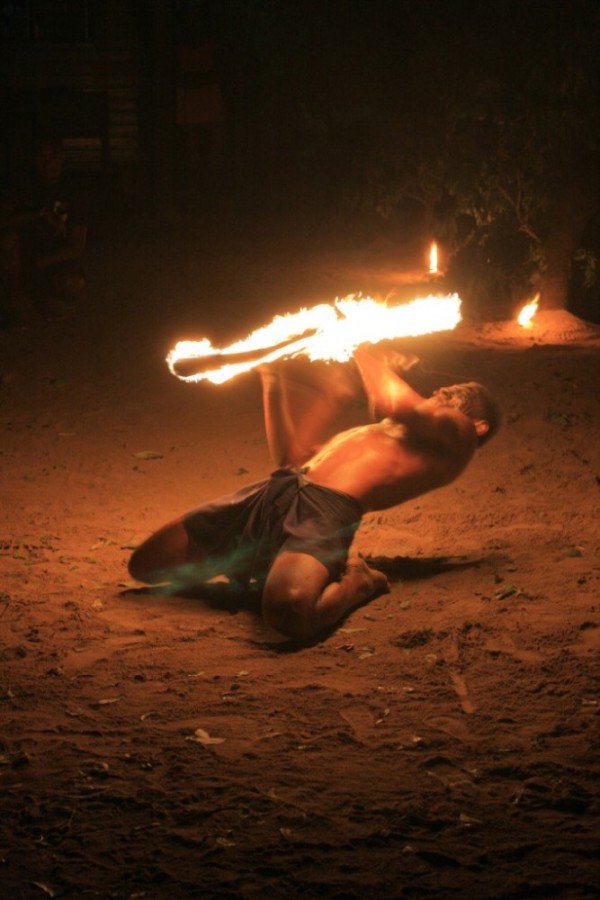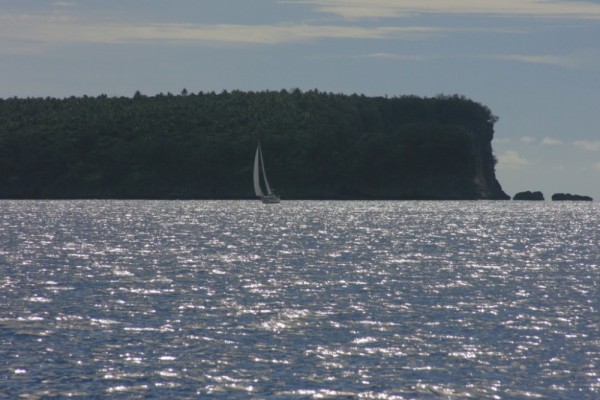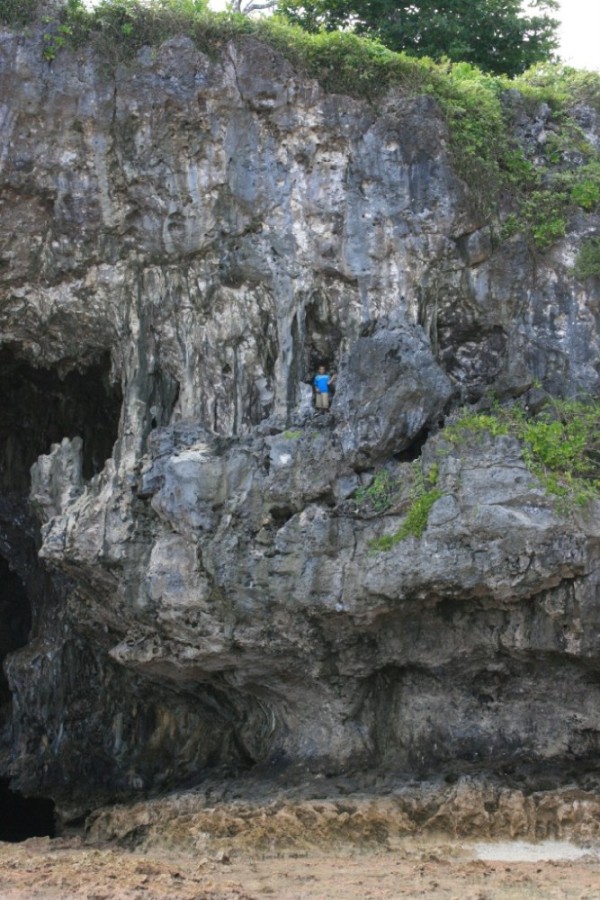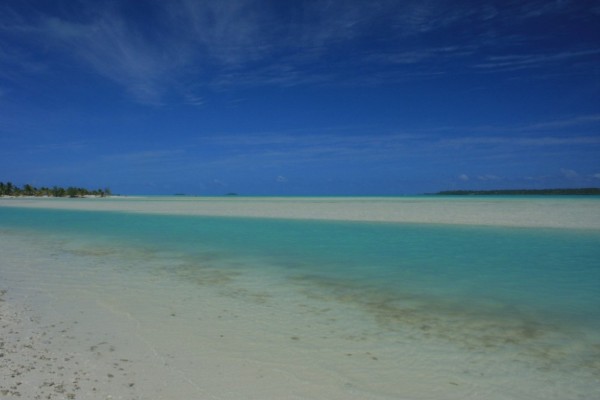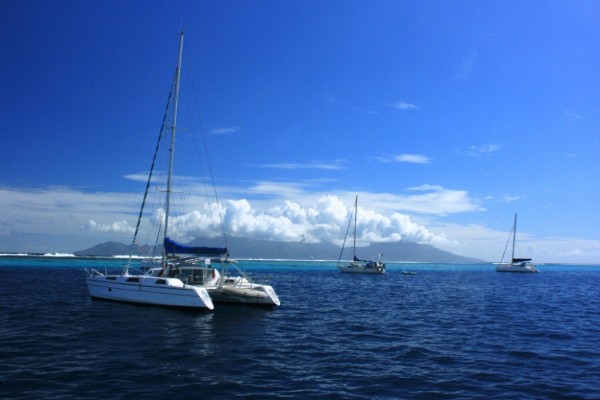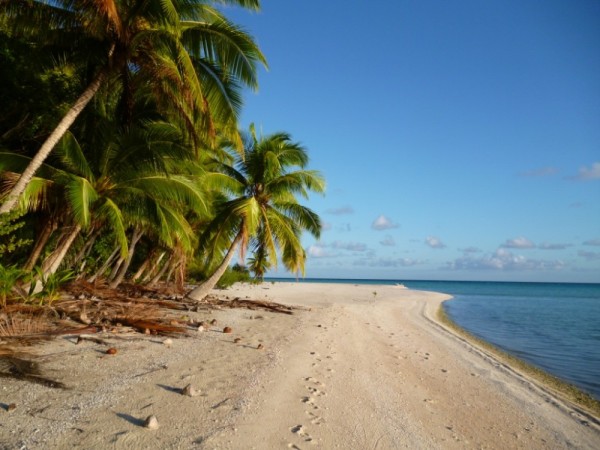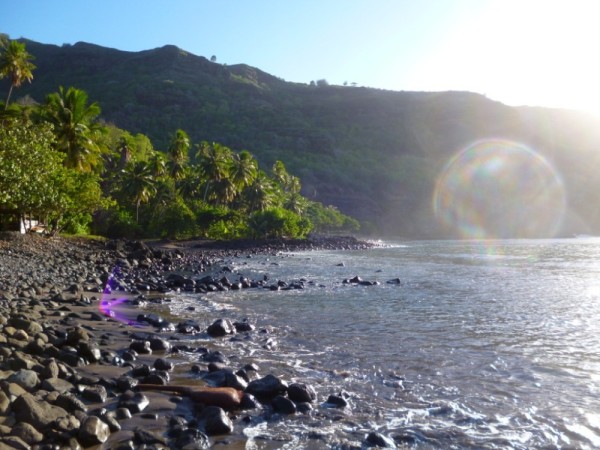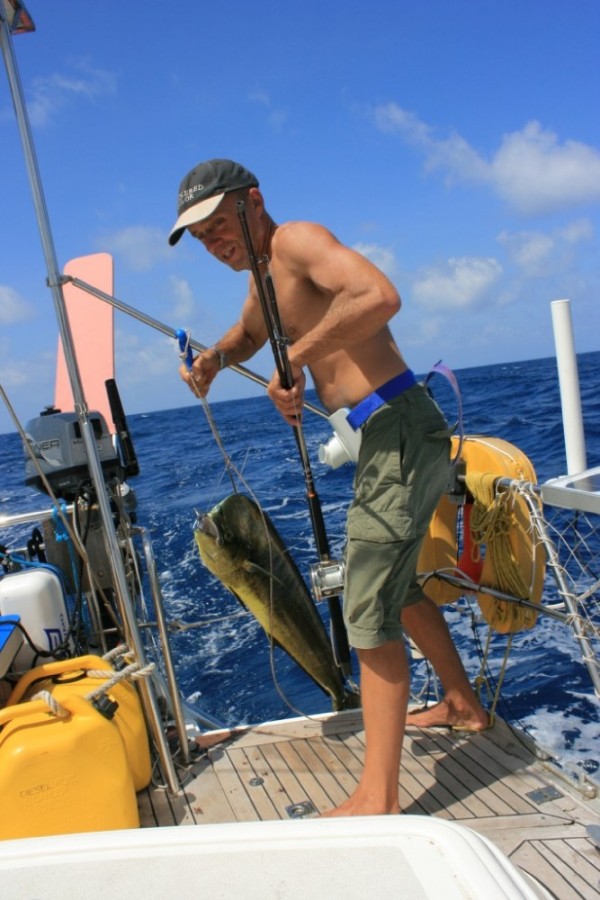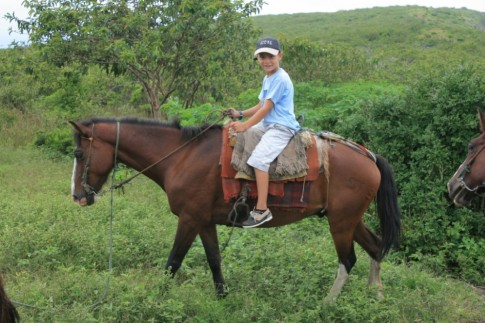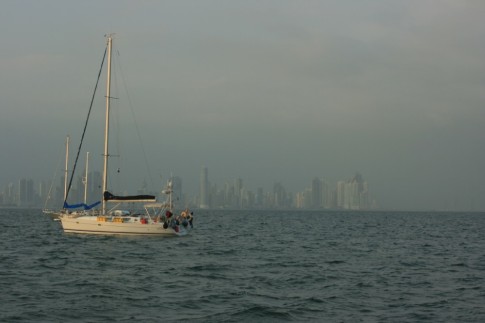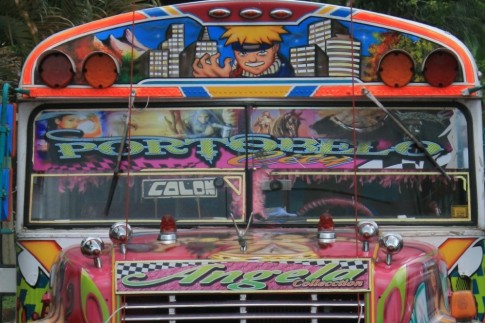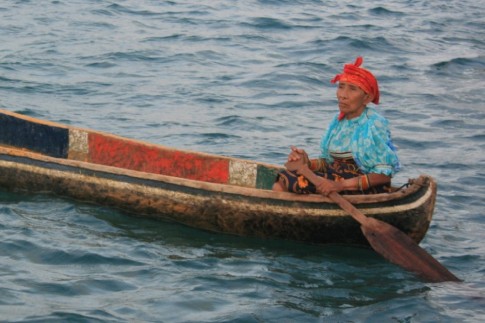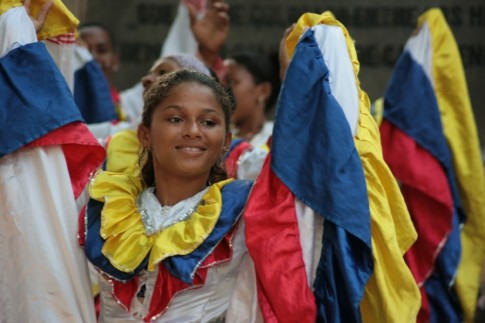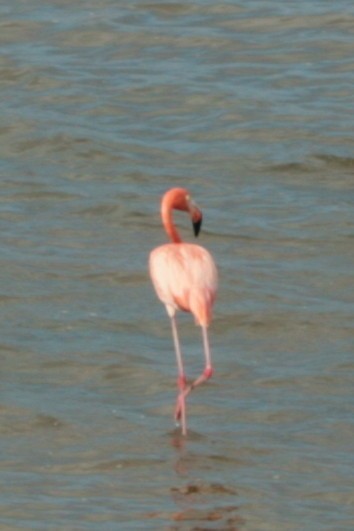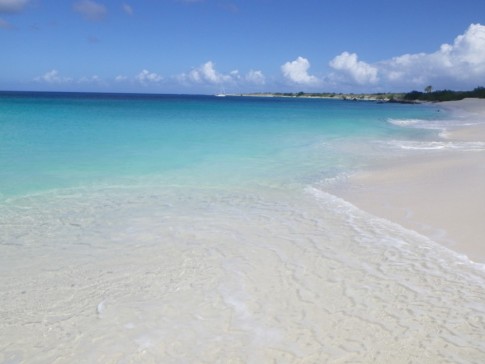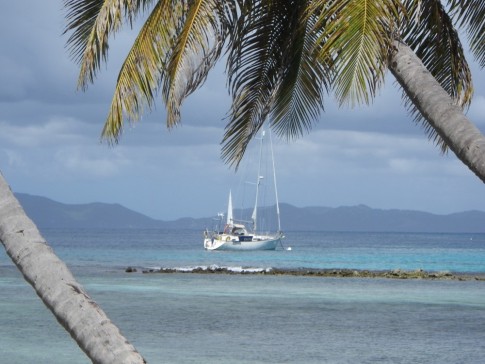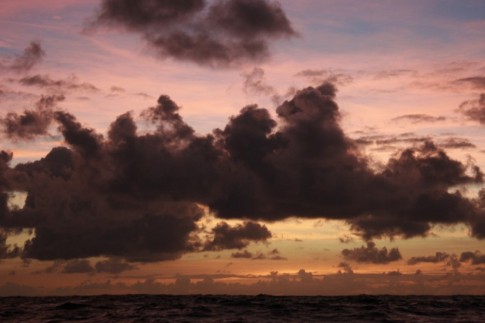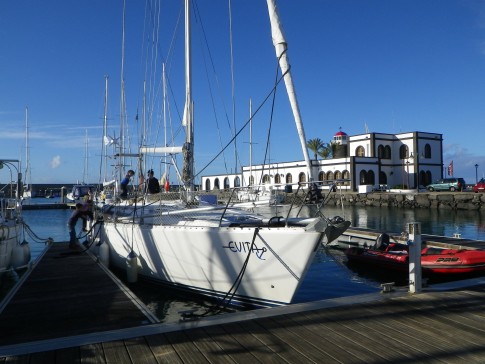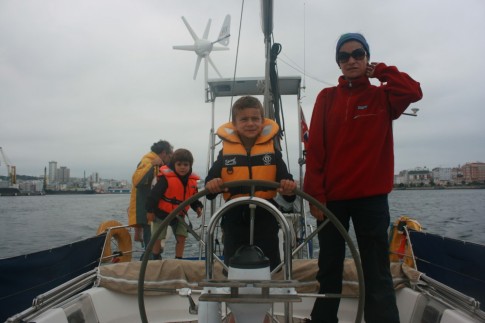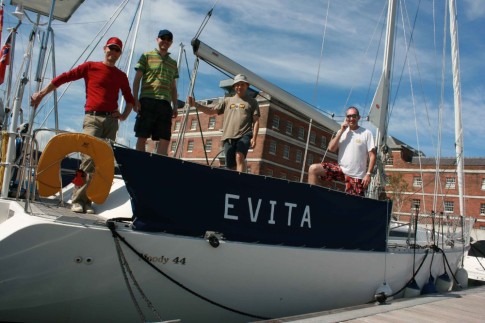Pura vida...Evita's voyage to the Seven Seas
The second part of our voyage, which at some point will get us all the way around the world. The first part was a mad dash across two oceans to Australia. This time we are taking it a little more slowly....
| Vessel Name: | Evita |
| Vessel Make/Model: | Moody 44 |
| Hailing Port: | Gosport |
| Crew: | Ian, Paula, Raul(13), Oskar(11) and Eva(9) |
| About: |
31 January 2016 | Club Mykonos, Langebaan, South Africa
Out of Africa? Not quite…
We completed all our clearance formalities - customs, immigration etc - on Thursday and on Friday morning we cast off our lines and exited the Royal Cape Yacht Club marina in perfectly windless conditions. Not even I could crash into one of the other boats when it is so calm!
16 January 2016 | Cape Town
Landlubbers
It is now more than six weeks since we sailed into the RCYC marina in Cape Town. The wind has been so strong for much of the time that had we even wanted to leave, we would have struggled. The marina here is tight, with narrow fairways and sharp turns so that even in calm conditions manoeuvring is [...]
05 January 2016 | Cape Town
Back at the Cape
We arrived back in Cape Town a couple of days before Christmas. The yacht club laid on a really good buffet on Christmas Eve, which was enjoyed by all the international crowd. On Christmas Day we were left to fend for ourselves, and had found a buffet lunch with friends fellow sailors from GOSI in [...]
20 December 2015 | Ai-Ais National Park, Namibia
African Road Trip Part 2 – Namibia
It is a long way from central Botswana to the Namib Desert; over 1000km in fact, which is a lot in the scorching heat with three kids on the back seat. We are always grateful for air conditioning, even though it does struggle when the temperature rises over 35 degrees.
15 December 2015 | Maun, Botswana
Africa Road Trip Part 1 - Botswana
The last week has had so little to do with sailing that I wonder whether this post has any place on sailblogs, but I have nowhere more appropriate so here goes....
05 December 2015 | Cape Town
Around the Cape
Our final passage of 2015 took us from Mossel Bay, around Africa's most southerly point - Cape Agulhas - past the Cape of Good Hope (not sure why this is the cape that gets all the press given it is neither the meeting point of the two oceans or the most southerly point) and into Cape Town. Compared [...]
Out of Africa? Not quite…
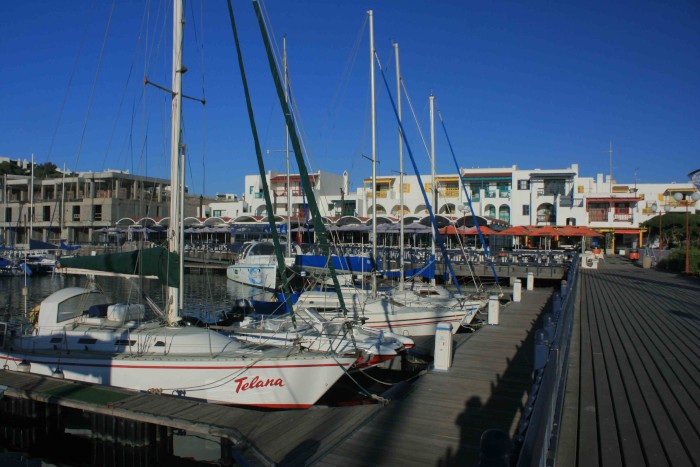
We had a forecast of southerly winds up to 20-25knots (good) and a SE swell of up to 4m (not so good) but the swell was set to diminish, so conditions were not bad for the start of a 1,700 mile passage to St Helena in the middle of the southern Atlantic Ocean. The wind filled in after a couple of hours, so we were able to turn off the engine, and the swell was there, which made for an uncomfortable start for those susceptible to the mal de mer. The swell was hitting us on the port quarter, which tends to make steering hard, so we ran both the windvane and the electric autopilot, to give some extra power.
The autopilot, however, was struggling. We have had a long running problem with it; when there is a lot of pressure on the helm, it gives a warning of low battery (irrespective of what the battery voltage actually is) and occasionally drops out, i.e. turns itself off and leaves the rudder free. We had the drive unit serviced by Raymarine in Penang about a year ago (they gave it a clean bill of health) after which we had the problem less frequently, and just got used to dealing with it. On Friday it was back in full force. The autopilot is what allows you to live on a boat - to eat, to read, to sleep, to eat, to use the toilet.... When you cannot rely on it, life becomes very hard so, with 1,700 miles to St Helena plus several thousand more to the Caribbean, we figured we really could not carry on and instead headed back to land to get the thing fixed properly.
When things go wrong, it never seems to be just one thing. As we approached the entrance to Saldanha Bay (about 60 miles or so north of Cape Town) I tuned the ignition to start the engine, and silence. Tried jump starting with a screw driver and no go. So with much embarrassment we called the port and requested a tow. "An hour" they said. So in preparation for waiting we began to reduce sail, and found the genoa furler line had jammed. So, 25 knots of wind, full genoa and no engine with boat rapidly approaching land. We gybed and headed back offshore and I spent the best part of an hour at the bow as it pitched in the wave unwinding the furling line, to free the jam, and then re-winding it back on. Sounds easy, but it's hard work when the boat is pitching on the waves, so one hand is always for holding on. We turned the boat around, and while we continued to wait for the tow, I had another go jumping the starter and this time the engine fired, so with many apologies we stood the tow down, motored into port and dropped the anchor.
South African sailing has thrown us another adventure!
Unfortunately all this happened on Friday evening, so we have to wait until Monday until we can do much with the autopilot. Yesterday we moved across the bay to Mykonos Marina. Not in Greece, but certainly Greek themed, with a Greek restaurant on the waterfront and whitewashed cubist houses rising behind. A piece of the Mediterranean down in the south Atlantic. We, of course, are unable to enjoy the restaurant as we have our carefully planned stock of four days' fresh food to eat before we are down to the non-perishables. We will then have to go and re-stock all the fresh stuff before we leave.
The biggest looser from the delay to our passage is Paula, who was particularly keen to arrive in St Helena in time for her birthday (birthdays at sea do not rank highly on her "to do" list). It was always going to be tight, but now it is impossible.
Landlubbers
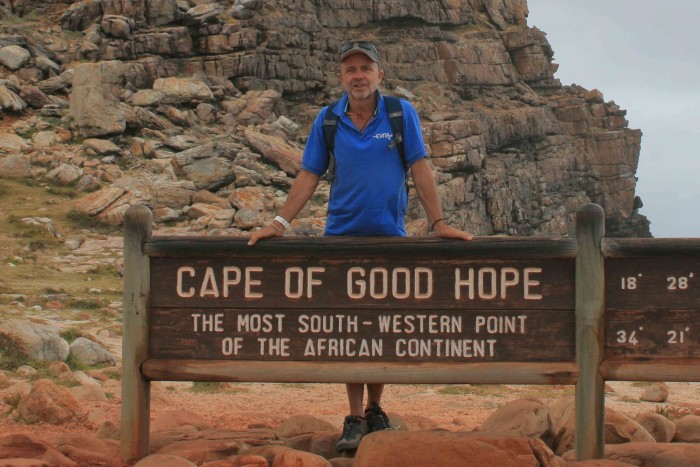
Even the locals have said that the sustained period of high winds we have experienced is unusual, so it must come to an end sooner or later. I guess not for nothing did the cape get its reputation, but it does seem to be quite localised. We have toured around the Cape Town area, and there are always places where it is howling, and places where it is still. Table Mountain is a big factor - the general SE wind is accelerated by the mountain through some channels, and is blocked out in other spots.
Having rounded the cape by boat, we drove down there one day to take a look at it from the land. The Cape Peninsula extends about 40km south of Cape Town, ending at Cape Point, which is an impressive headland, although not the significant cape on the peninsula. That position is taken by the Cape of Good Hope; as noted in an earlier post, this is not the most southerly point of the African continent, nor is it the meeting point of the two oceans (Cape Agulhas takes those honours) but it is the most south westerly point in Africa. At one time it was known as the Cape of Storms (no explanation needed) but was later renamed the Cape of Good Hope, as the rounding of it offered hope to the early explorers of a route to India. The day we chose to go was probably the cloudiest of all the days we have spent here, so the views were not great, but there is something more poetic about wind rain and mist, than sunshine in a place of such repute.
We are currently in no rush, so all these winds are no problem for us. We are still really enjoying being here. We managed to meet up with Nick and co a couple of times while they were on their travels. We enjoyed a couple of days in Franchhoek, sampling some really good South African wines (after my earlier complaints about the local stuff, we have found some quality). Wine tasting here is very well organised. Unlike many other places we have been to, they charge for tasting, but you get value for your money with very generous samples, and quite a wide selection. The problem of the generous samples - and who wants to spit it out? - is of course transportation, and what does the poor driver do? In Franchhoek, that problem is solved by the Wine Tram (actually mostly a bus), which drives you around numerous vineyards for your sampling. The wine country, and the vineyards in particular, are really beautiful. The country is green, with the lush vines running in parallel up the sides of the valley, and the vineyards themselves are a really nice mix of old buildings opened up in the way that only modern architects do, with thick green lawns and huge oak trees providing shade.
Although we have not ventured out with Evita, we have made a couple of trips in other boats. The first was from Hout Bay - a bay a few km south of Cape Town - from where we visited a seal colony on a little island. The wind was lashing across the water there, so Nick asked the question as to whether the trip was safe with a baby. "You're the father - up to you" was the response. The wind was blowing off the land, so the sea was not particularly rough, but the wind was knocking the boat around, so I did wonder when I saw the looks on Nick's and Liz's faces (Bella was not fazed) whether they thought that this was a case of parental irresponsibility. We saw the seals - briefly - and made it back in one piece (without as far as I could see the skipper batting an eyelid) so all fine in the end.
On their final day we crossed Table Bay to Robben Island, the home of Nelson Mandela and many other imprisoned comrades in the long struggle against apartheid. The island is now a museum and a world heritage site, home to some 200 staff and their families. There are fantastic views of Cape Town and Table Mountain from the island, which must have made incarceration all the harsher for those stuck there for all those years. We were shown around the prison itself by a former political prisoner, which only emphasised the recentness of this piece of history. Just 25 years ago this country was a very different place.
Since our visitors departed, we have been back to work. Our kids are now back at school - something not universally appreciated - and I am getting back into boat jobs. But we also continue to enjoy the life in this beautiful city, with still more museums to visit, sights to see and food to enjoy....
Back at the Cape
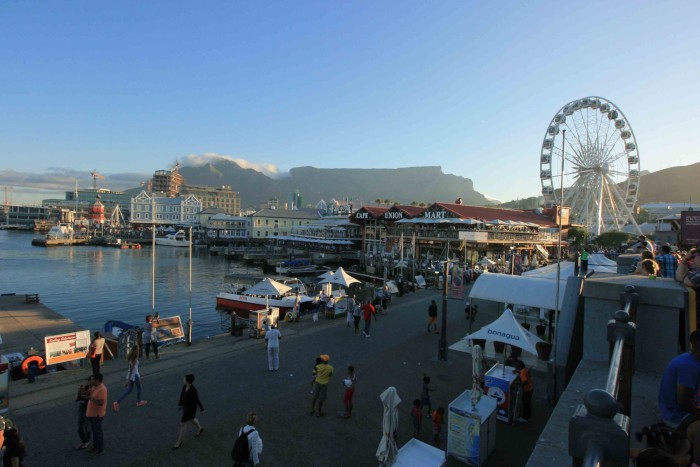
Brother Nick, with Liz and new baby Bella arrived on Boxing Day; after no visitors for 18 months, we have our second in six weeks! The kids had been talking of little else for ages other than meeting their new cousin for the first time, and they don't seem to have been disappointed. There seems to be a competition going on for who can be the one that helps her to walk on her own for the first time. She's almost there.
We spent the week up to New Year getting to know the city, and what a great place it is. The geography of the place is spectacular - with Table Mountain almost never out of sight, and the stunning coastline running southwards through the beach suburbs towards the cape. The light is often so bright it hurts, only softened by the spray from the sea when the wind blows the tops off the waves.
Inspired by having visitors, we have been very good tourists here in the city. We took the full offering from the double decker bus tour company, and got around the city centre, and also out to the beautiful wine region in the suburb of Constantia, around the back of Table Mountain. We also took the cable car up the mountain itself; our timing was bad - peak season, late morning so long queues to get onto the cable car, and then stinking hot at the top, but the views over the city and Table Bay, and all the way down to Cape Point were spectacular.
There is also a really good collection of museums here in the city. With the history this place has, it is not surprising that we have learnt plenty about mans tendency to oppress his fellow man. The District 6 museum tells the sorry story of the eviction of a vibrant multicultural community from the heart of Cape Town to make way for a new white suburb (which as a result of internal and external protest was never built) and the Slave Lodge tells the familiar (to us after visiting other places in the Indian Ocean) story of the colonial powers solution to their labour requirements. Continuing the oppression theme, we also visited the excellent holocaust centre in the Jewish Museum. The South African museum, with its focus on natural history, provided some light relief!
The marina in which we are berthed - the Royal Cape Yacht Club - has, like much of the city, breathtaking views of Table Mountain. It is also linked to the mountain by a special climate - every couple of days the mountain sends down screaming winds that blow through the late afternoon, evening and into the night. Elsewhere in the city the air is usually still. The timing of these winds always seems to coincide with the arrival of an unsuspecting foreign boat (the locals are presumably used to it, although scratches bear witness to the fact that even they get caught out sometimes), most of whom get into trouble navigating the narrow channels between the pontoons when trying to get into their berth. All have agreed that day sailing is out of the question - we will go out of here once only, in the morning, and when there is no wind.
The club laid on a "Bring and Braii" night for New Year's Eve, so just for a change we (except Paula of course) all enjoyed a meat feast. Very enjoyable, and kids in particular had a good time because another family boat - Yindee from the UK - arrived giving them some new friends. A Cape Town tradition (apparently with its origins in the time of slavery) is a New Years carnival parade on the 2nd of January which we sought out. It was certainly colourful, although the music (brass bands) and the clothing (shiny suits) are not what you might expect from a carnival in Africa.
Nick and co are currently touring out of the city, so we have been trying to reintroduce the kids to school work (not easy after a month off), and getting a few boat jobs done in preparation for the next ocean crossing, as well as a bit of sightseeing. We are planning to meet them for a couple of days wine tasting at the end of the week, before they return home and we get ourselves properly sorted out for the trip to St Helena.
African Road Trip Part 2 – Namibia
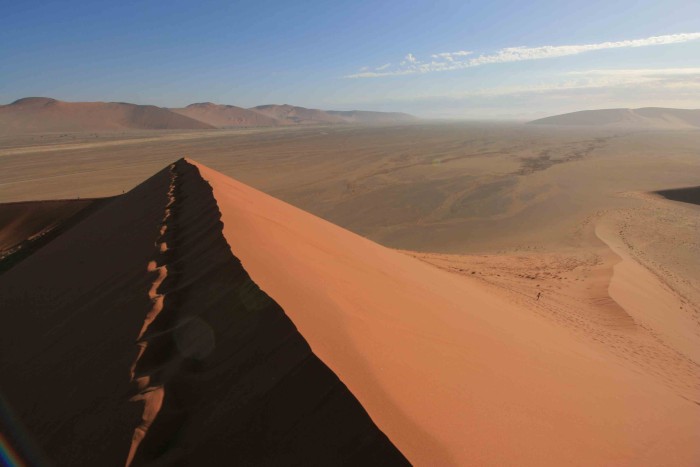
We stopped at the end of the first day at a guest farm just over the border in Namibia. Guest farms seem to be a pretty common form of accommodation here - they are generally working farms that also offer chalets, a campground, swimming pool, bar, restaurant, and usually some sort of animal interest. This one had half of its land given to conventional farm animals (cows mostly) and the other half to native game - so we enjoyed kudu and springbok as part of the buffet dinner. Paula, as usual, missed out on the local delights, and had piece of frozen fish instead - this part of the world is not one for vegetarians! The animal interest was a small collection of mostly natives - although bizarrely included some emus (what's wrong with ostrich?) - and a pair of leopard cubs. Carnivores tend to be a favourite although the practice appears somewhat questionable, and seems to have no conservation value, despite being dressed up as the "saving" of orphaned or injured animals. In captivity they become habituated to humans (distinct from tame), so their behavior is changed forever, and so these "saved" animals can never be released back into the wild, yet they require feeding with copious amounts of meat from other species over many years, not all of which are plentiful.
We broke the journey on the second day with a stop for lunch and a museum in Windhoek, the capital. The Museum of Independence was interesting; more a celebration of the struggle than an objective history of it, but worthwhile nevertheless. Although it had not been our original intention to stop there (the national museum next door was shut for renovations) it was well worthwhile and for me rekindled some memories from the 1980s of SWAPO and the fight against the colonial/apartheid rulers from the south. The conclusion of the war in 1990 led to Namibia becoming the last African country to gain independence.
The main B1 road divides Namibia on a north-south axis. To the west of this road is the Namib desert, and the roads here are all dirt, so progress was slower once we left Windhoek. Although the drive to Solitaire was long, the landscapes did make up for it. Solitaire is a petrol station in the middle of nowhere, with a lodge, a shop and a campsite attached to it. Being in the desert, we were finally allowed a comfortable night's sleep - cooler conditions and no mosquitos.
In Solitaire we also found the Namib Carnivore Centre, an organisation that is working to try and limit carnivore deaths at the hands of unhappy farmers whose stock is being eaten. This is a problem in the north of the country, where there is more intensive farming, and the centre moves the offending animals to the desert - where there is less farming, although good conditions for the carnivores, and more tourists, who like to see the animals thus creating the incentive for the guest farms to tolerate the animals on their land. They have a number of cheetah (habituated, so can never be re-released) in a large enclosure, which are interesting to see. These serve the purpose of fund raisers - you pay money to see these cats, and that money funds the real conservation activities.
The main draw of the Namib Desert are the dunes around Sesriem and Sousousvlei. They say these are the biggest sand dunes in the world, and whether or not that is true, they are impressive. The colours are stunning in the light of the evening or early morning; getting up and on the move early is not our strong point (tents on the roof of the vehicle means we have to completely pack up in order to go anywhere) but it was well worth the effort. The light was beautiful, and it was cool enough to walk around and even climb up one of the dunes.
The Namib Desert is possibly the oldest desert in the world, having endured arid conditions for 55 million years. As a consequence, life forms have evolved to survive the harsh conditions, ranging from the microscopic to the iconic oryx, or gemsbok, a large antelope which can survive long periods without water, and can adjust its body temperature as a means of dealing with the heat. Another particular species is the quiver tree, a tall plant related to aloe vera. We camped on a site with an unusually dense population of these plants.
Further south in the desert and close to the South African border is the Fish River Canyon, the Grand Canyon on a slightly smaller scale. But a canyon that is 500m deep is still pretty impressive. There is a walk down inside the canyon - described as the hottest walk in the world. Walking from the car to the starting point was more than we could contemplate, and I don't think anybody attempts the walk at this time of the year.
After the heat and the dust of the canyon, what better than a dip in the Ai-Ais springs, in the same national park? Sounded good, but when the pool is filled with water that comes out of the ground at 65 degrees, it is not particularly refreshing.
If Botswana was about wildlife, then Namibia is really all about landscapes. And just as much as the sights the were the focus of the trip, it was driving through the desert that makes the country memorable. Distances are significant, so journeys are long, but the vastness and emptiness are impressive, and the colours are really special.
With all the distance we have driven, we were fortunate not to have a repeat of our contact with the traffic police. There are plenty of police checkpoints, though. We could not work out what they were looking for - on occasion, they stopped us to give us a handful of plastic bags to use for rubbish in the car, but most of the time they just asked us where we were coming from, and where we were going. We never worked out what their purpose was but the officers were always friendly.
Africa Road Trip Part 1 - Botswana
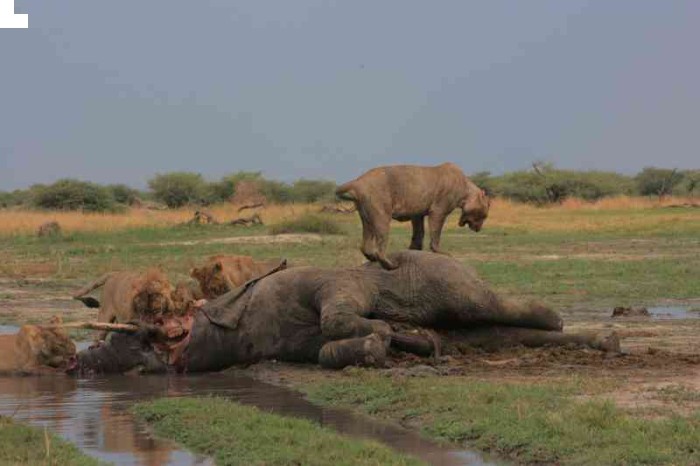
We had visited South Africa several years ago, and toured by campervan, and had also seen some of the wilds of Kwazulu Natal while we were in Richards Bay, and finding ourselves with a decent amount of time after arriving in Cape Town, we decided to head further afield, into Botswana and Namibia, both of which we had heard many good things about. There are many kilometers to cover, so in order to cut a few out, we flew up to Johannesburg and picked up our 4x4. The vehicle is equipped for camping, with pull out tents on the roof, a fridge, a cooker and all the other necessities. Fully equipped for four people. Never mind that we are five - one of the kids can sleep on the back seat of the car - in strict rotation!
After picking up the vehicle, we made a stop at the nearest supermarket, hit the road, and managed to get as far as Martins Drift, just over the border in Botswana. We started the drive up the eastern side of Botswana the following morning on excellent and almost deserted tarred roads. Only problem is that the verges are used by the locals to graze their cattle, donkeys and goats, which wander across the highway with no warning. That explained why the rental company told us not to drive at night! We drove as far as Nata, a small town half way up the eastern side of the country. The good roads proved only too tempting for Paula, who got pulled up for speeding on this our first day in the country. Luckily for her, at that time we had not yet been to a bank to get any Botswanan Pula, and the police obviously thought that sending us to a bank in the next town to get money with which to pay was more trouble than it was worth so they let her off. When I get stopped a couple of days later for failing to stop at a stop sign I was not so lucky, but found myself in the bizarre position of choosing how much my fine should be; the traffic cop said to me that he thought the 1,000pula fine was too much so asked me how much I thought - we settled for 300pula. Apparently Botswana has a low crime rate, which explains the number of traffic police - we have learnt to observe road traffic rules more carefully now!
Nata is located on the eastern edge of some huge salt pans that are part of the Kalahari desert, which makes up a good part of Botswana. We impressed ourselves by getting up at 5am the next morning, and packing up the tents in just 30 minutes to get out to the salt pan just about in time for sunrise. The scale and the quietness of the place was quite impressive, and in spite of the barren land, there was some life - a lone wildebeest, a few ostrich and plenty of other bird life. The 5am start enabled us to enjoy some time before the heat of the sun arrived - and when it arrives it arrives with a vengeance. From 730am to at least 530pm it is almost impossible to do anything other than sit in the shade (not much of that) or drive around in the car and enjoy the airconditioning (although later there were arguments between those who wanted it on full, and those who wanted the windows open to be closer to the wildlife).
Next stop was Kasane, on the Chobe River, and the greenest place we had yet seen since arriving in South Africa. Kasane is the gateway to the Chobe National Park, and also is within easy reach of Victoria Falls in Zimbabwe. A day trip into another country, with all the border formalities, is not part of the way in which we have been travelling, but hey, it's one the great natural sights of the world so off we went. The border was not particularly onerous in terms of time, but Mugabe has to raise some cash somehow, and foreign tourists are an easy target. And British tourists are his favourite target at US$55 each. By good fortune I am travelling as an Australian at the moment (my full British passport was not acceptable to the South Africans when we arrived) which saved me $25. Anyway, the falls were fantastic. You can identify them from some distance away by the cloud of spray rising up from the gorge. There is so much spray that it obscures the view of the waterfalls from some of the vantage points and we almost needed raincoats at times. The views were quite magnificent though.
There were a lot of people walking around in ZANU-PF T-shirts and jackets. I had shared my (admittedly sketchy) knowledge of the recent history of the country, so of course Oskar's first questions, asked loudly, were "Are those the bad guys?", "Do they kill their opponents?". How to be a good guest in someone's country.... It turned out that these were delegates at a party conference being held in Victoria Falls, taking advantage of free entry to the falls in advance of the visit of Mugabe the next day.
The highlight of Kasane is the Chobe riverfront, the south bank of the Chobe river which is a haven for wildlife in the area. We saw a large population of hippos from our afternoon cruise on the river, both in the water and out munching on the lush grass on the islands in the river. The following day we drove along the shore, and were amazed by more elephants that we had ever thought possible in one place. I think this is what they call a megaherd, comprising probably 200-300 animals. There were so many of them that at times we felt a bit nervous, as there was no obvious escape for us if one of them lost its temper. Fortunately that didn't happen.
Along the riverfront there were also large populations of buffalo, zebra, warthogs and multiple types of antelope. The kids are all by now experts in identifying animals, and usually there is no debate. Where there is uncertainty, clarity is always brought by Eva Attenborough, who speaks with such authority that there is no further challenge.
Botswana took a decision back in the 1980s to go for low volume/high spend tourism. That is to say they figured that they could get the same amount of money, with less impact on the environment (this is the sympathetic interpretation) by increasing all their prices and deterring most would be visitors. Lodges in the parks are extraordinarily expensive (according to the guidebook $500/night per person is not excessive) and even the basic campsites that we are staying on cost 5 times as much as equivalent sites outside the parks. The benefit, of course, when you do stump up the money is that you get a real wilderness experience, which you don't have to share with a crowd; the parks are big, and other visitors are few (helped by this being low season).
We stayed for two nights at Savuti campsite, in the Chobe park. Like all the campsites in this and other parks in Botswana, it is unfenced, so the wildlife is free to enter the campsite. This is all very exciting, but also potentially dangerous. One night we heard lions roaring quite close by, and in the morning saw some paw prints just a few metres away from where we had been sleeping. When we arrived in the campsite, one of the rangers told us of a dead elephant about 15km south of the campsite. We drove down to have a look the next morning, and found the unfortunate elephant, and saw also two lions keeping guard from the trees and couple of hundred metres away. We returned later, in the cool of the late afternoon, to find a total of 12 lions in attendance - some feasting on the elephant's flesh and other fast asleep like an old guy after his Sunday lunch. We wondered how the elephant had died, but were told later that this pride (14 lions in total) had actually taken to hunting elephants, and had taken down this medium sized animal. This is the sort of thing you hope to see on a safari, and we watched for an hour or so in gruesome fascination as the lions ripped out the guts, or worked their way through the trunk of the beast.
We returned the following morning to find a single lioness guarding the carcass from an increasing number of hungry vultures and jackals. From time to time the lioness would retreat to the shade for a rest, and the jackals and the vultures would very tentatively move in towards the elephant, but always watching out for the lioness. She would then bound back out of the trees, scattering the scavengers in all directions. The cycle repeated several times. It was quite an amazing thing to watch - a real David Attenborough moment.
Our next camp was in the neighboring Moremi park, in the Okavango Delta. Our first campsite here, on the Khwai river, was also unfenced, and has regular visits from hippos, hyenas and a troop of baboons. On the night we were there the hippos stayed in the river, we didn't see any hyenas, but the baboons were very active, waking all the campers at 5am with a noisy fight, and raiding the campsites for anything that took their fancy. The emptied our baboon-proof litter bin, and made off with one of Raul's and one of Oskar's shoes. We did have a look around for a baboon with an unmatching pair of footwear, but no luck!
Although there has been very little rain yet this season, the area around the Khwai River is much wetter than around Savuti, which was very dry. We saw lots of wildlife as we drove along the river near our camp, including a new antelope very quickly incorporated into the kids' repertoire - a red lechwe. We worked our way around to our next campsite at Third Bridge. We could have done with a few bridges while getting there - having decided to brave the dry season route, we found our way blocked several times by murky water of uncertain depth and repeatedly turned around to try and find a way. The GPS told us we were just 2km from our destination when we found another flooded route, but with recent tyre tracks entering. I walked in and it didn't seem too deep, but still.... Bread and butter for the experienced 4x4ers, but hearts in the mouth for us as we drove into the water, heaving a sigh of relief as we emerged on the other side without getting stuck.
We drove into Third Bridge campsite and found the track almost blocked by a giraffe feeding from the trees. A big animal, but we were happier sharing the site with a giraffe than with those baboons.
The Okavango Delta is unique in Africa. It is an inland river delta, where the water flows not into the sea but rather seeps into the land or evaporates. A small proportion of it continues out of the delta area, carrying salt into the Kalahari Desert, leaving the delta area as a fresh water system. Yesterday we saw some of the park from the car, but the roads tend to go on dry land, away from the marshy edge of the water. This morning we saw the wetter side of the delta, from a boat on one of the narrow channels. It is a totally beautiful environment, and so completely different from the dry land in the park. We didn't see the animals that can be seen on the land - other than a few hippos we only saw birds - but the beauty was in the water and the trees and the reeds, the reflections of the greenery in the early morning light.
And then out of the park to Maun, and civilization (restaurants at least!). Next stop Namibia...
Around the Cape
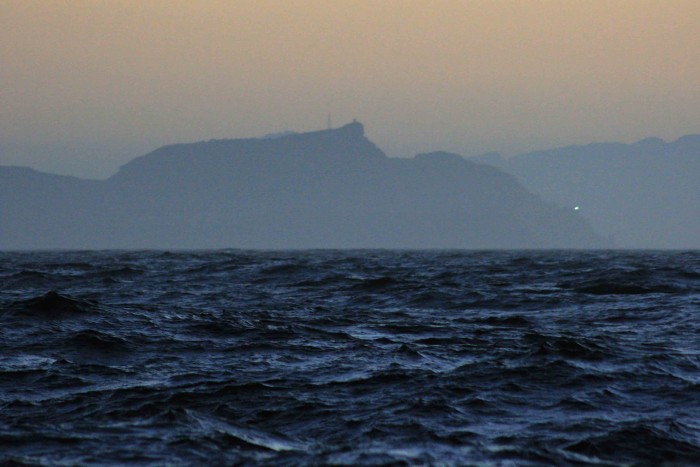
So we say goodbye to the Indian Ocean, and hello again to the Atlantic. We're almost in home waters!? In our experience, of the three oceans we have now crossed, the Indian offered far and away the most challenging sailing - the squalls in the Maldives, the wild waves on the passage down to Rodrigues, and the variable winds and extreme currents of the Mozambique Channel and the east coast of South Africa.
We are now moored up in the Royal Cape Yacht Club marina, which is a short cab ride away from the centre of the city. We will be deferring most of the delights of Cape Town for a few weeks while we head north and inland, but from what we have seen this far, this is a world away from the other cities we have visited in this country. The spectacular location helps, but also this is a much more relaxed city. We have gone two days here without being continuously warned about the dangers of this street and that street; totally different from our experience of Durban or East London. You get the sense that maybe there is just a little bit more racial integration here than elsewhere - not a lot mind, but all is relative - and there isn't the sense of tension that we felt in other places. We look forward to more time here, and to the arrival of our next visitors - Nick, Liz and the our kids' new cousin Bella - but for the next few weeks we are going back north for some real African safari.
 |
A bit of Europe in the middle of the Atlantic, so finally cheese and wine...
16 Photos
Created 5 August 2016
|
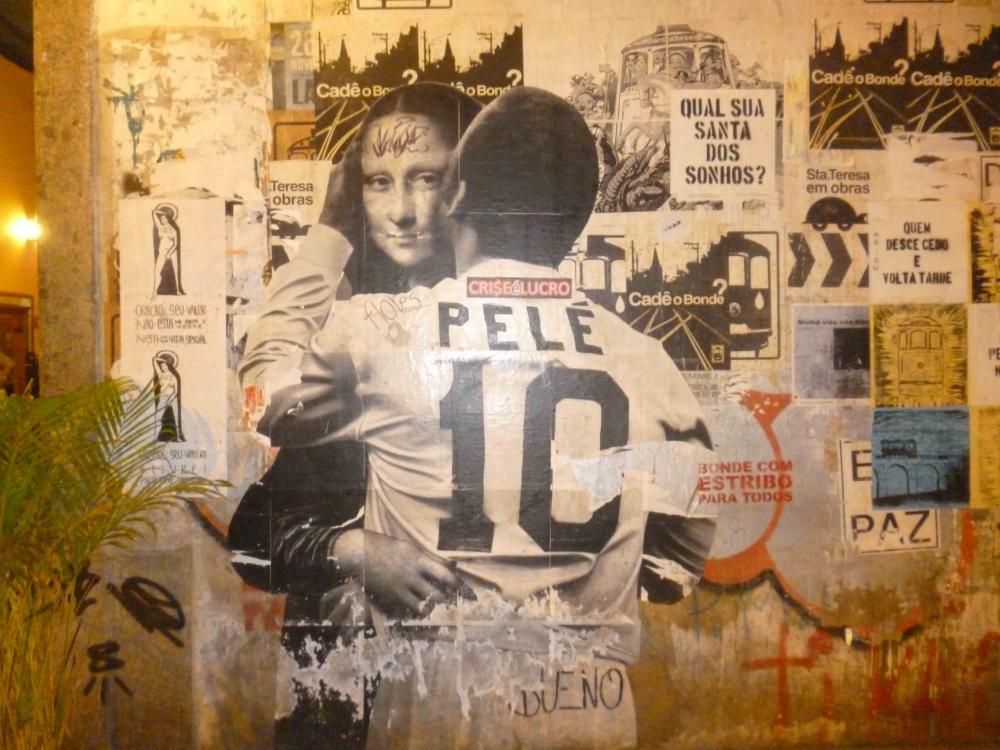 |
Possibly the worst place in the world to try to rebuild a Volvo engine, but one of the best places to be forced to stay - there is so much in this country.
63 Photos
Created 29 March 2016
|
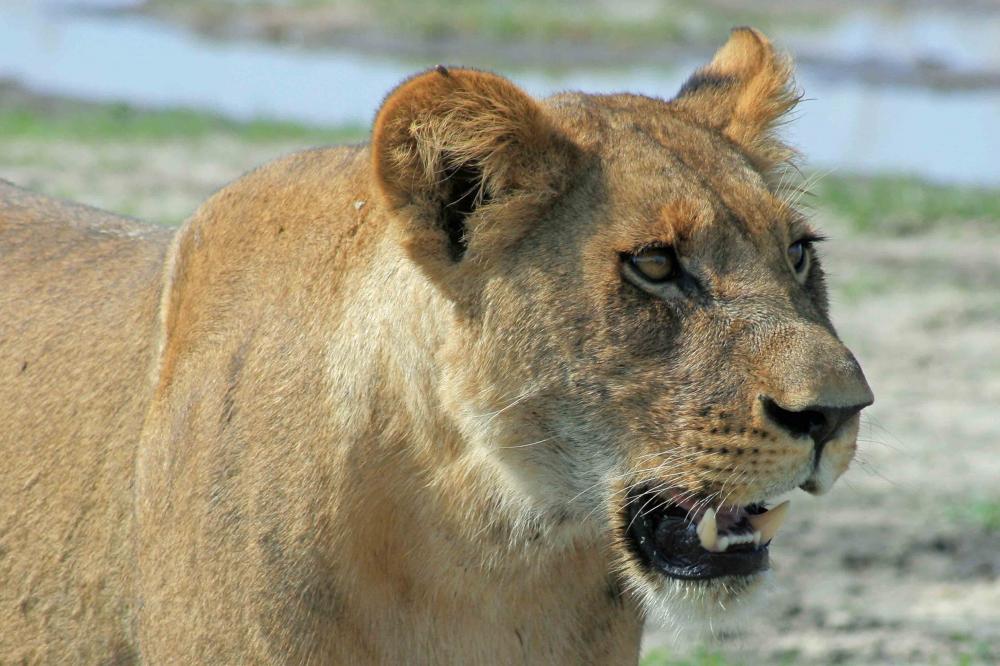 |
With Evita moored in Cape Town we hit the road for a safari through Botswana, Namibia and back into South Africa
52 Photos
Created 24 December 2015
|
 |
Arrival in the African continent and the end of the Indian Ocean crossing
62 Photos
Created 22 November 2015
|
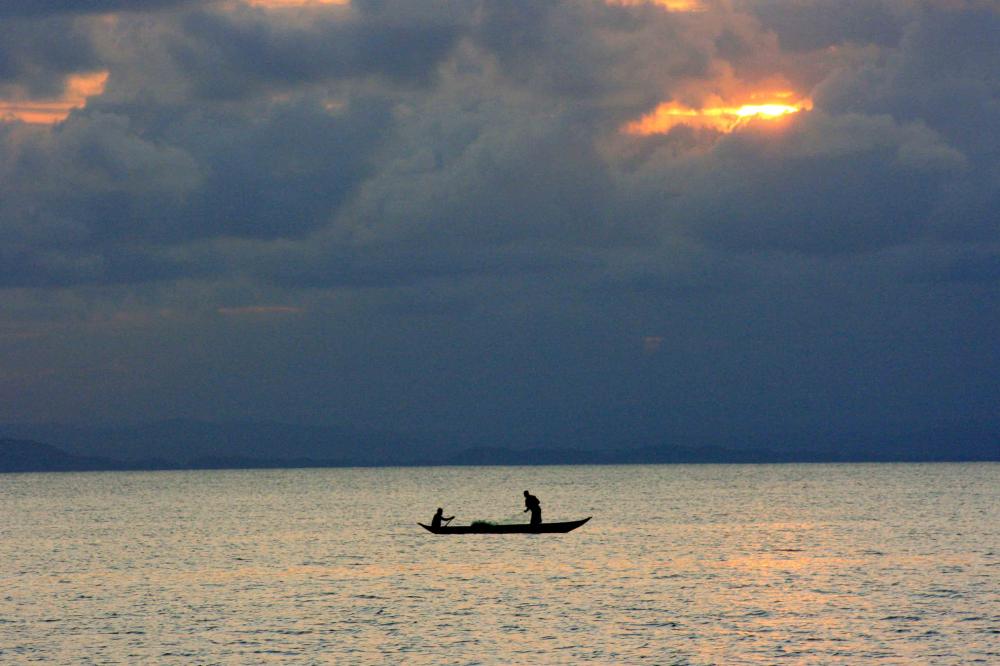 |
The big red island off the coast of Africa, home to lemurs and baobab trees.
58 Photos
Created 25 August 2015
|
 |
A little bit of Europe in the Indian Ocean, but at only 3 million years old a baby of an island. Big supermarkets, traffic jams and some stunning landscapes.
34 Photos
Created 12 August 2015
|
 |
An island whose population tells the sorry story of colonial exploitation, but who now represent a fascinating mix of cultures.
33 Photos
Created 11 July 2015
|
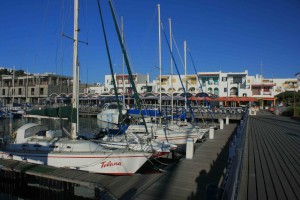
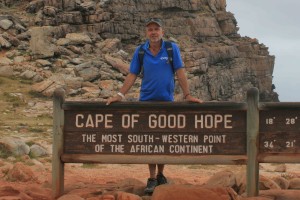
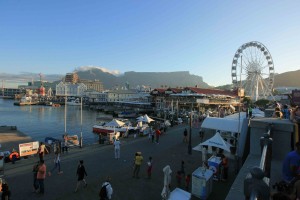
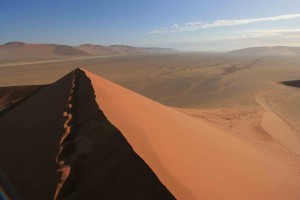
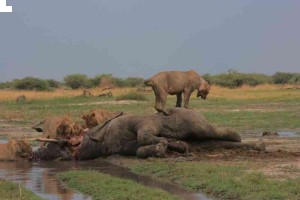
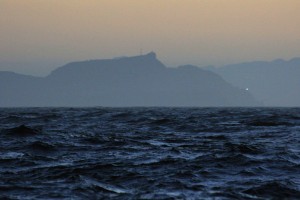
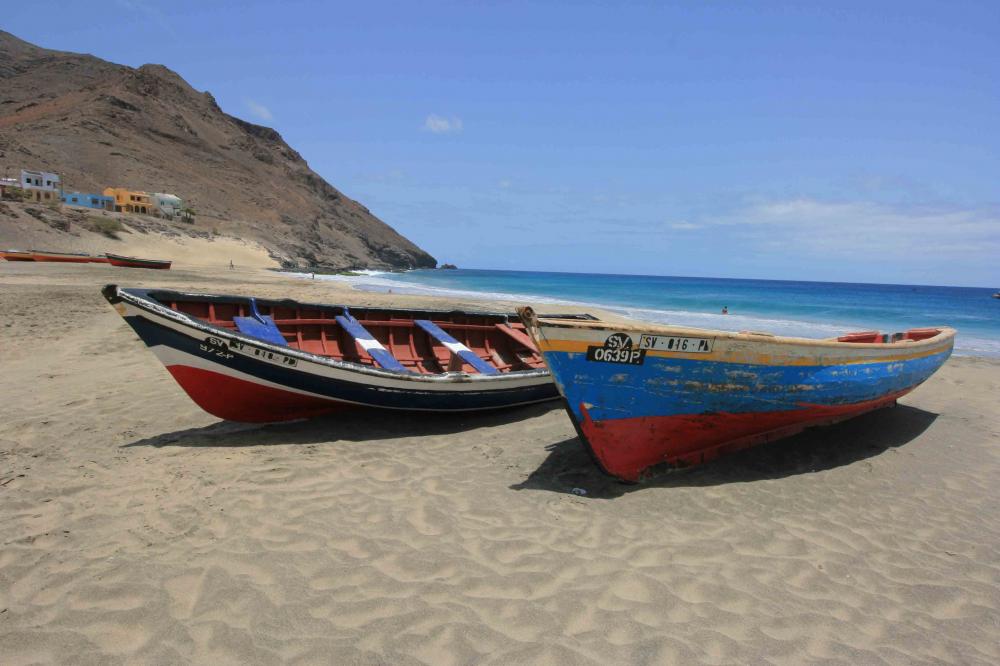
.jpg)
